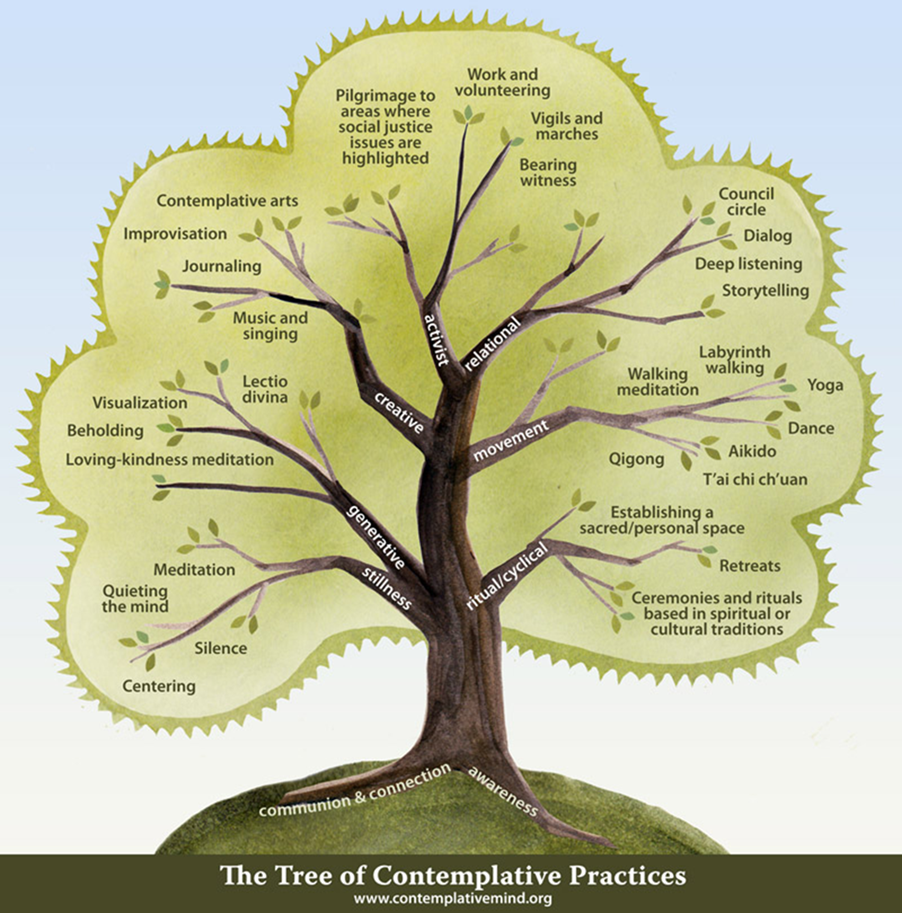I am grateful to the Center for Contemplative Mind in Society for their visual image of contemplative practices as a tree that is one form, one essence, and yet depicts the diversity within that form beginning with the root system, through the larger limbs and into the smaller branches.

From this perspective, the roots, the foundation of contemplative practices come from two desires: communion and connection lead to opportunities for stillness, generativity, creativity and activity. A desire for awareness leads to opportunities that might be cyclical or ritualistic, involve movement or relationships. Take a moment to glance at the practices mentioned here…how many of them are you practising now, or have in the past? Are there one or two that look interesting enough to explore? Is there an area you have never considered as contemplative practice?
Each of the practices mentioned in this diagram are known as contemplative practices and yet the possibilities are endless as we learn to bring the calm quiet within into other moments in our daily lives. During a workshop I offered on Enhancing Your Well-being Through Contemplative Practices, one participant spoke of being in contemplation as she prepared a meal for her family. Her moments of preparation were filled with quiet appreciation of and gratitude for those who would share the meal.
What are the times and places in your busyness where you can slow down, find that quiet place within and continue the activity even as you are in contemplation? It might be simply being mindful, fully aware of each moment – or choosing to be aware of your breath as you stand in line waiting to checkout. A momentary focus on those around you, wherever you are, with an appreciation for their presence is also life enhancing for yourself and the others.
Thich Nhat Hanh suggested, when involved in a lengthy task that required a great deal of concentration, that you set an hourly alarm to remind and invite yourself to take a moment or two to get up and stretch, or take several deep breaths or just smile.
Contemplative practices do not require a dojo or a group or a meditation room or a religious service, although these opportunities might call to you. The practice of contemplation begins with your choice to slow down and be aware – whatever you are doing, wherever you are.
Header Image courtesy of Pixabay
